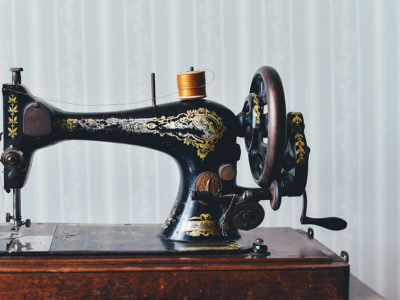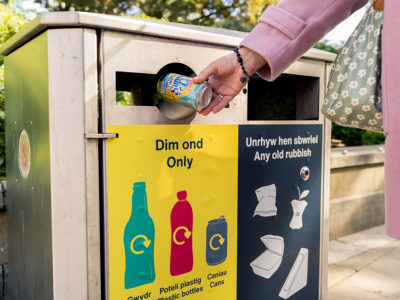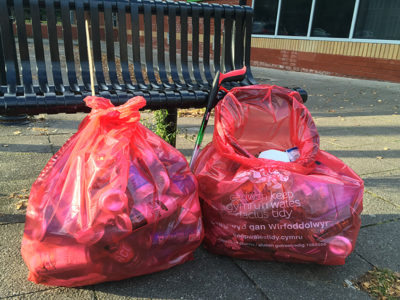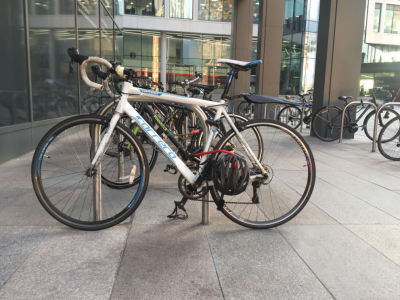Animals and space in 60 seconds

Ham the chimpanzee, getting carted to his rocket. Credit: NASA, 2005
US fruit flies were the first animals in space, sent in pressurised tanks aboard a V-2 rocket in 1947.
Two years later a Rhesus monkey named Albert II was the first mammal in space, while in 1953 Laika – the Russian street dog – became the first animal to orbit Earth.
The Americans responded with Ham the Cameroonian ‘Astrochimp’, who was launched in a suborbital mission in 1961.
All were killed except a few fruit flies and Ham – who bruised his nose when he landed with a thud in the Pacific Ocean.
Oscar Wilde wrote: “We are all in the gutter, but some of us are looking at the stars.” Wales may be just emerging from a deep trough of recession, but in the next five years it could be the headquarters of the UK’s space industry. How the likes of Ray Gravel, Owain Glyndŵr and Cliff Morgan would gasp in their graves if they saw upon this barren land not the familiar constellation of sheep, but the pursuit of space itself.

Virgin Galactic’s New Mexico Spaceport was designed by British architects and will be operational in 2014. Credit: Virgin Galactic
In dire economic straits any government would be foolish not to accept the helping hand of a new wave of industry. Space tourism is already generating between $600million and $1.6billion in America – and Richard Branson’s Virgin Galactic is holding this industry by the scruff. His intentions are to build in South Wales, Scotland or the West Country. South Wales is hotly tipped as the frontrunner due to areas of undeveloped land, proximity to the Bristol Channel and good transport links to Britain’s major cities.
Tourist trap
The gigantic cherry on the top of this irresistible space cake is the tourism it would generate. A spaceport is just a glorified runway –but with neon bling circumventing the airfield, double-barrelled space planes and Branson’s billboard grin, who could resist having a nose?
Wales currently welcomes eight million tourists across an industry that generates 26,000 jobs. According to science commentators SpaceBoffins, a spaceport would double the impact tourism has on Wales. A successful port could triple it.
For Welsh wildlife this spells nightmare; how much of a nightmare depends on the spaceport’s location.
Location, location, location
North Wales is already out of the question (have you tried cutting through the Cambrians in a train?). So too are the Snowdonia, Brecon Beacons and Pembrokeshire National Parks, as they would require planning permission for a traffic cone. The South Wales coastline it is then.
“The main concerns regarding a spaceport development are light pollution, destruction of feeding grounds and the disruption of a green corridor”
The major issue is that vulnerable species such as bottlenose dolphins and porpoises could provide a road hump for any developments that might add pollution and noise to an already crowded airspace. They are protected, says Cliff Benson, director of Sea Trust Wales, who feels the prospect of a spaceport would offer more dirt than dollar.
“There is a transatlantic airliner spewing out exhaust gasses almost every minute of the day as it crosses Wales from either west or east,” says Benson, “and we have a higher than average abundance of marine mammals in our waters.”
“We would want to be part of any consultation process with regards to this project. But on balance the economic factors would probably far outweigh any ecological arguments as they always do,” he muses.

One Welsh animal set to suffer under increased air traffic and noise pollution is this handsome chap: the lesser long-eared bat. Credit: Mnolf, 2005
With such an abundance of endangered wildlife in Wales, it would be difficult – to paraphrase commercial badboy Parker Selfridge in Avatar – not to ‘throw a stick in the air and have it land on a fern’. What would Wales risk: a pristine coastline of blue flag beaches, among the best in the world? Or woodland: sanctuaries to the last colonies of red squirrels? Perhaps our coastal scrublands, its underground scribbles of the near-eradicated European brown hare and its roosts of the mysterious, but troubled, long-eared bat, should pay the price?
Abi McLoughlin, of the Bat Conservational Trust, says, “The main concerns regarding a spaceport development are light pollution, destruction of feeding grounds and the disruption of a green corridor.” A Green Corridor, she explains, are areas of wilderness that wildlife use to commute from their homes to their feeding grounds.
British law protects many of these species; indeed, there are many ‘European Protected Species’ and ‘UK protected species’, shielded by various pieces of legislation. Virgin Galactic would need to obtain a licence from Natural Resources Wales (NRW) before building anywhere, but this should not be a problem. Unfortunately, legislation is not always the ultimate defence – as the reversal of the Protection of Badgers Act 1992 earlier this year proved.
Economy Vs environment
Few realise that animals and space have history; even fewer that theirs is perhaps as important as ours.
Today’s relationship, though, is inverted. Space is now being introduced into their world. With Wales the home of a liturgy of rare and endangered species, space tourism and its economic prowess would surely hurdle the minefield of environmental policies designed to protect them.

Bottlenose dolphins, a protected UK species, will be in the firing line if Virgin Galactic decide to launch their spacecrafts over the Bristol Channel. Credit: NASA, 2005
However, Clive Bates, former policy director of The Environment Agency, has a final, soothing, opinion to add. He believes space tourism, through its economic potential, would benefit the environment – granted measures are put in place.
He explains that, “The key thing is to encourage the development. If it is proportional, and not a rent-seeking opportunity, the two could be mutually beneficial.”
One thing is clear: though we could well see our pristine Welsh countryside used to launch rich civilians into space, it will not be for years. But when Branson and his incredible flying machines touchdown on the Land of Song, we must be prepared to grasp the opportunity of a lifetime – and evolve into a land of space.
Animals and space in 60 seconds

Ham the chimpanzee, getting carted to his rocket. Credit: NASA, 2005
US fruit flies were the first animals in space, sent in pressurised tanks aboard a V-2 rocket in 1947.
Two years later a Rhesus monkey named Albert II was the first mammal in space, while in 1953 Laika – the Russian street dog – became the first animal to orbit Earth.
The Americans responded with Ham the Cameroonian ‘Astrochimp’, who was launched in a suborbital mission in 1961.
All were killed except a few fruit flies and Ham – who bruised his nose when he landed with a thud in the Pacific Ocean.




